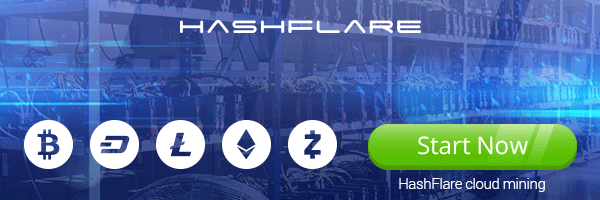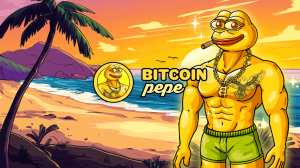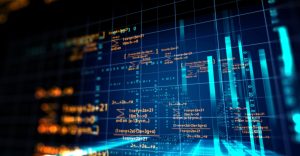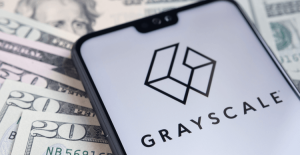Tracking Our Crypto Carbon Footprint with Aerial CEO Andreas Homer
BeinCrypto spoke to Andreas Homer, CEO, and Co-Founder of Aerial, about his platform and why counting your carbon emissions matters.
There is no denying that environmental concerns are becoming a key talking point in the cryptocurrency and blockchain community.
Whether it’s arguing that emissions are not a central concern, or a new project aiming to put sustainability at its center, no one is escaping this discussion.
Most non-fungible tokens (NFTs) are minted on the Ethereum blockchain. At the same time, less energy-intensive than Bitcoin, the annualized energy consumption for the blockchain is estimated at 63.96 TWh. Its carbon footprint is estimated at 30.38 Mt CO2.
Homer and his team at Aerial wanted to make an accessible way for crypto hodlers to acknowledge and track their carbon emissions with a data-first approach.
“We’ve [the founders] all banded together and really wanted to build a platform for climate action that covered different emission sources. That is well designed. And really allows people to see data see information, and take action on it,” he explains.
“We want to take a data-first approach, where we show you information. We try to be as objective as possible. And then we give you ways to take action, as opposed to say shaming you or making you feel really bad and hoping that, you know, for pushes you to take action. You actually want to just take the information approach.”
From travel to NFTs with Aerial
The platform doesn’t just deal with crypto. It began as a way for people to track their travel emissions through transportation like flying and ride-sharing.
However, upon seeing the rise in interest in NFTs, the team saw the benefits of adding a calculator for these items to their app.
“We started to see like, really mainstream artists take on NFT projects. So at that point, we thought, you know, let’s put something in full form that people can use. So as at that point, we had minted NFTs and played with them as consumers and individuals. We’re really big fans of the technology, just the power that it gives creators. There are just so many interesting aspects to it. I think it can be really meaningful to creators,” he says.
“Of course, there is also another discussion that started to pop up around the energy consumption around cryptocurrencies. Not just cryptocurrencies but just blockchain technologies. So things built on Ethereum. People are asking, what are the implications of transactions on the blockchain, whether it is mining, buying and selling as an individual or business, or even creating digital art. How is that affecting energy consumption?”
Homer explains that the tool makes it easier for both collectors and artists of NFTs to consider their impact and implement changes.
These can range from participating in projects that improve their carbon credits to changing how they interact with NFTs and marketplaces.
“What’s interesting is, there were some really great changes that happened on different platforms. For example, the principle of lazy minting where you don’t actually mint an NFT until it’s sold. So that reduces the costs for creators, because they don’t have to pay the fees upfront. But it also doesn’t create unnecessary energy consumption, because you’re only transacting on the blockchain when it’s necessary.”
The interest in green NFT platforms is expanding rapidly. NFT marketplaces built specifically with lower minting power consumption are growing by the day.
Homer explains that sidechains are also being utilized to tackle the energy consumption issue.
“There have also been some other innovations are around, minting NFTs on side chains, which has lower energy consumption. A lot of this was accelerated by people who have a platform. Any major artists and musicians who wanted to see some change. They are well known and have a voice and a platform and can help push things in the right direction. So I think what’s really great is to have them use their voice in a positive way.”
Sidechains are already popular options, with Damien Hurst’s recent collection The Currency Project, was minted on the Palm sidechain.
Putting the focus on people
In the overall climate change discussion, it is often pointed out that individuals aren’t the biggest polluters. Rather companies contribute the most to carbon dioxide emissions, toxic run-off, and energy consumption.
However, for Homer, focusing their app on the individual is about recognition and awareness rather than blame.
“What’s a bit troubling about that is if you look at the reason why we’re mining for so much of these natural resources. It’s because there’s demand for petroleum-based products. The list is really long but transportation and travel is a part of that. The cars that we drive the energy choices that we have at home. So I feel like we have to be aware of our role in just the market dynamics here, where we are as individuals and consumers, driving demand for petroleum-based products.”
He explains that the pandemic helped highlight how our individual actions, in a collective setting, can create the change we’re after.
Much like we pulled together to wear masks and sanitize, Homer sees this as a way to deal with the climate issues.
“I think what was really interesting was that there was just a showing the power by individuals. Seeing a common goal and a common problem and banding together and solving for it. It gave us hope for the climate crisis, which is the next big collective crisis,” he says.
“If we coordinate, help make things better when it comes to some of these big crises, as opposed to just sitting waiting and fingers crossed that a company or a government will just solve things for us. We all have to step up and take responsibility.”
Disclaimer
All the information contained on our website is published in good faith and for general information purposes only. Any action the reader takes upon the information found on our website is strictly at their own risk.













